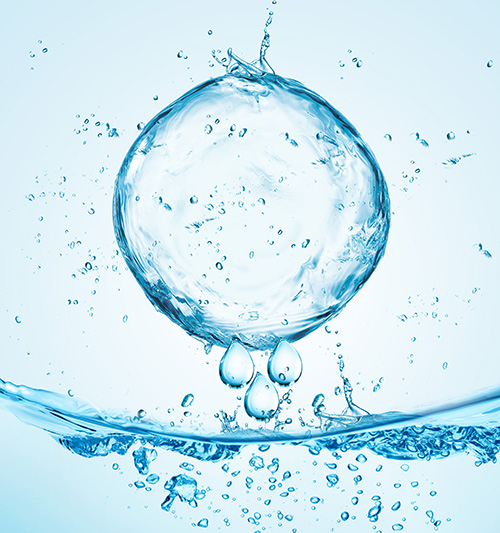What is an Atmospheric Water Generator and How Does It Work
May 21, 2025
Imagine a device that can create water from thin air. That’s exactly what an atmospheric water generator does. It captures moisture from the air around you and transforms it into drinkable water. This process relies on humidity, which is the water vapor naturally present in the atmosphere. By cooling the air, the device condenses the vapor into liquid form. With over 2.3 billion people living in water-stressed regions and 785 million lacking basic water services, this technology offers a promising solution to global water scarcity.
Key Takeaways
Atmospheric water generators pull water from the air for drinking. They are important in places with little water.
These machines work better in humid areas. More humidity means they make more water.
Buying an atmospheric water generator can save money over time. You won’t need as much bottled water or city water.
Using solar power or other renewable energy makes them greener. It also helps lower the cost to run them.
These machines are helpful in emergencies. They give clean water fast when usual sources are not safe.
How Atmospheric Water Generators Work
Image Source: pexels
The Role of Humidity
Humidity plays a crucial role in the operation of an atmospheric water generator. These devices rely on the moisture present in the air to produce water. The higher the humidity, the more efficient the water extraction process becomes. For example, in regions with 90% relative humidity, water yield can exceed 8.46 grams per gram of air, which is a significant increase compared to areas with only 15% humidity.
Did you know? The effectiveness of atmospheric water generators depends heavily on local weather conditions. These machines work best in humid climates but can still provide water in drier areas with innovative designs.
Statistical analyses show that as relative humidity increases from 30% to 60%, water yield improves by over 63%. This makes atmospheric water generators particularly valuable in tropical and coastal regions where humidity levels are naturally higher. However, even in arid environments, advancements in technology allow these devices to function effectively by optimizing moisture capture.
Condensation and Filtration Processes
The core mechanism of an atmospheric water generator involves condensation and filtration. First, the device draws in air using a fan. The air then passes over a cooled surface, causing the water vapor to condense into liquid droplets. This process mimics how dew forms on grass in the early morning.
Once the water is condensed, it undergoes a thorough filtration process to ensure it is safe for consumption. Filters remove impurities, such as dust, bacteria, and other contaminants. Advanced systems may also include UV sterilization to eliminate any remaining microorganisms.
In regions with high solar intensity, such as deserts, solar energy can enhance condensation rates. Studies have shown that increased solar concentration boosts desorption processes, leading to faster water production. For instance, a device tested at 40% relative humidity produced 0.12 liters of water per kilogram of material during non-concentrated cycles. When solar energy was concentrated, the output increased significantly due to improved vapor transport.
Energy Sources for Operation
Machine that makes water from air require energy to power their fans, cooling systems, and filtration units. The energy source can vary depending on the device's design and location. Many systems use electricity from the grid, but renewable energy sources like solar panels and wind turbines are becoming increasingly popular.
In regions with abundant sunlight, solar-powered atmospheric water generators offer a sustainable solution. These systems reduce reliance on fossil fuels and minimize environmental impact. A case study in Saudi Arabia demonstrated that closed-loop thermal gradient systems could achieve significant energy savings while maintaining high efficiency.
For off-grid applications, hybrid systems combining solar and wind energy provide a reliable power supply. This makes atmospheric water generators an excellent choice for remote areas, emergency relief efforts, and eco-friendly living.
Benefits of air water machine
Access to Clean Water
An atmospheric water generator offers a reliable way to access clean water, especially in areas where traditional water sources are scarce or contaminated. These devices extract water directly from the air, bypassing the need for rivers, lakes, or underground reservoirs. This process ensures that the water you collect is free from pollutants commonly found in natural sources.
The filtration systems in these devices play a vital role in maintaining water quality. They remove harmful substances like dust, bacteria, and heavy metals. Some models even include UV sterilization to eliminate microorganisms. This makes the water safe for drinking, cooking, and other household uses.
In emergencies, such as natural disasters, atmospheric water generators can provide immediate access to clean water. Their portability and ability to function in diverse environments make them a valuable resource for relief efforts. Whether you live in a remote area or face water shortages, these devices can help you meet your daily water needs.
Environmental Advantages
Atmospheric water generators contribute to environmental sustainability by reducing dependence on traditional water sources. Instead of extracting water from rivers or aquifers, these devices use the moisture in the air. This approach helps preserve freshwater resources, which are increasingly under strain due to population growth and climate change.
Tip: By using an atmospheric water generator, you can help lessen the depletion of natural water reserves, especially in regions experiencing prolonged droughts.
These devices also minimize the environmental impact of water transportation. Traditional methods often involve pumping water over long distances, which consumes energy and contributes to greenhouse gas emissions. Atmospheric water generators eliminate this need, offering a localized solution that reduces your carbon footprint.
Environmental Improvements from AWGs:
Provide a sustainable water source.
Reduce depletion of freshwater resources.
Benefit regions facing prolonged droughts.
By addressing water scarcity, atmospheric water generators play a key role in protecting ecosystems and supporting biodiversity. Their ability to function in diverse climates makes them an adaptable and eco-friendly choice.
Long-Term Cost Savings
Investing in an atmospheric water generator can lead to significant cost savings over time. While the initial purchase price may seem high, the long-term benefits outweigh the upfront costs. These devices eliminate the need to buy bottled water or pay for expensive water delivery services.
If you live in an area with unreliable water infrastructure, an atmospheric water generator can reduce your dependence on municipal water systems. This not only saves money but also ensures a consistent supply of clean water.
Renewable energy options, such as solar panels, can further lower operational costs. By powering your device with solar energy, you reduce electricity expenses and make your water production more sustainable. Over time, the savings from reduced water bills and energy costs can offset the initial investment.
Did you know? Some atmospheric water generators are designed to last for decades, making them a cost-effective solution for households and businesses alike.
Limitations of Atmospheric Water Generators
Humidity and Climate Dependency
The performance of an atmospheric water generator depends heavily on the surrounding climate. These devices work best in hot and humid environments where the dew point is close to the air temperature. In such conditions, the energy required for condensation is minimal, making the process efficient. However, in dry or cold climates, efficiency drops significantly. For example, specific energy consumption can rise from less than 1 kWh per liter in humid areas to as high as 6 kWh per liter in arid regions.
Note: When the dew point temperature falls below 2°C, frost formation can occur, making active refrigeration techniques impractical.
Seasonal changes also affect performance. In some regions, reliability can vary from 0% to 98% depending on the time of year. This dependency on weather conditions limits the scalability of these devices for large-scale water production.
Energy Consumption
Energy consumption is another critical limitation. Atmospheric water generators require power to operate fans, cooling systems, and filtration units. While they perform efficiently in hot and humid climates, energy demands increase in less favorable conditions. For instance, in dry and cold environments, the energy required for cooling and condensation can escalate significantly.
This variability in energy use makes these devices less practical in areas with limited access to electricity. Renewable energy sources like solar panels can help offset these demands, but they may not always provide a consistent power supply.
Initial Costs and Maintenance
The upfront cost of an atmospheric water generator can be a barrier for many households and businesses. These devices often require a significant investment, which may not be feasible for everyone. Additionally, ongoing maintenance adds to the overall expense. Filters need regular replacement to ensure water quality, and cooling systems may require periodic servicing.
Tip: While the long-term savings can offset these costs, the initial investment may deter some users, especially in low-income regions.
Despite these challenges, advancements in technology continue to address these limitations, making atmospheric water generators more accessible and efficient over time.
Applications of Atmospheric Water Generators
Image Source: unsplash
Water-Scarce Regions
In regions where water scarcity is a daily challenge, an atmospheric water generator can provide a sustainable solution. These devices extract moisture from the air, offering a clean and reliable water source. This is especially beneficial in drought-prone areas where traditional water supplies are either contaminated or insufficient.
Recent studies highlight the impact of these devices in addressing water shortages:
Benefit
Description
Sustainable Water Source
AWGs provide a clean drinking water source by extracting moisture from the air.
Cost-Effective Implementation
The technology can be implemented without extensive infrastructure, making it accessible.
Resolution of Water Supply Issues
AWGs can help reduce or completely resolve water supply problems in areas with contaminated sources.
By using an atmospheric water generator, you not only gain access to safe drinking water but also contribute to reducing plastic waste. Switching from bottled water to AWGs can help decrease the 35 billion plastic bottles discarded annually. This makes them an eco-friendly choice for both individuals and communities.
Off-Grid Living
If you live off the grid or in a remote area, an atmospheric water generator can be a game-changer. These devices operate independently of centralized water systems, ensuring you always have access to clean water. They are particularly useful in locations lacking infrastructure, such as rural villages or isolated cabins.
AWGs also support sustainable living. By combining them with renewable energy sources like solar panels, you can create a self-sufficient water supply. This reduces your reliance on external utilities and lowers your environmental footprint. Additionally, these devices enhance public health by providing safe water for drinking, cooking, and sanitation.
Tip: AWGs can even support small-scale agriculture by supplying water for irrigation and livestock, improving food security in remote areas.
Emergency Relief
In disaster-stricken areas, access to clean water often becomes a critical issue. Atmospheric water generators can provide an immediate and portable solution. These devices are invaluable during emergencies, such as hurricanes, earthquakes, or floods, where traditional water sources may be compromised.
Emergency relief teams frequently use AWGs to ensure safe drinking water for affected populations. Their ability to function in diverse environments makes them a reliable resource in crisis situations. For example, they can support healthcare facilities by supplying water for patient care or aid in sanitation efforts to prevent disease outbreaks.
By incorporating AWGs into disaster preparedness plans, you can help communities recover faster and build resilience against future challenges.
Sustainability and Cost-Effectiveness of AWGs
Environmental Impact
An atmospheric water generator offers a sustainable way to produce clean water without depleting natural resources. Unlike traditional methods that rely on rivers or groundwater, these devices extract moisture directly from the air. This reduces the strain on freshwater reserves, which are already under pressure due to population growth and climate change.
AWGs also help combat plastic waste. By replacing bottled water with a localized water source, you can reduce the 300 million tons of plastic produced globally each year. Furthermore, many AWGs can operate using renewable energy like solar or wind power, making them an eco-friendly choice.
Aspect
Evidence
Water Source
AWGs produce potable water from air, expanding availability during shortages and contamination events.
Energy Efficiency
Recent advancements have improved the energy-water ratio, enhancing feasibility for drinking water resources.
Environmental Impact
AWGs are more sustainable than bottled water, reducing plastic waste and not depleting groundwater reserves.
Renewable Energy Adaptability
They can be powered by solar and wind energy, making them suitable for various environmental conditions.
By adopting AWGs, you contribute to a cleaner planet while ensuring access to safe drinking water.
Cost Comparison with Traditional Water Sources
While an atmospheric water generator provides a sustainable solution, its economic feasibility depends on several factors. The initial investment for these devices can be high, including installation and advanced technology costs. Maintenance expenses, such as filter replacements and servicing, add to the financial burden. This makes AWGs less accessible in low-income regions.
Compared to traditional water systems, AWGs eliminate the need for extensive infrastructure like pipelines or reservoirs. However, the high upfront costs can deter adoption. For example, market analyses show that the capital and maintenance expenses of AWGs often outweigh their benefits in regions with limited financial resources. Despite this, the long-term savings from reduced water bills and reliance on bottled water can offset these costs over time.
Innovations for Improved Efficiency
Recent technological advancements have significantly improved the efficiency of atmospheric water generators. Upgraded filtration systems enhance water purity while reducing waste. Electrically improved harvesting methods increase water collection rates, even in low-humidity environments.
Innovation Type
Impact on Efficiency
Upgraded Filtration Systems
Enhances water purity and reduces waste
Electrically Improved Harvesting
Increases water collection rates
Advanced Oxidation Processes
Improves water quality and reduces contaminants
Automatic Variable Filtration
Optimizes filtration based on water quality
Sustainable Hybrid AWGs
Lowers operational costs in diverse climates
Asphalt Solar Collectors
Increases water collection in hot environments
For example, in 2024, a new sorbent-based technology demonstrated the ability to produce 5.8 liters of water per kilogram of sorbent daily at 30% humidity. This innovation highlights the potential for AWGs to become more energy-efficient and cost-effective in the future.
Atmospheric water generators play a vital role in solving water scarcity. By extracting moisture from the air, they provide clean water in areas where traditional sources are unavailable. Their ability to operate sustainably makes them a resilient choice for the future.
Note: AWGs reduce environmental strain and offer a localized solution to water shortages.
Continued innovation is essential to overcome challenges like energy consumption and climate dependency. As technology advances, you can expect these devices to become more efficient, affordable, and accessible, paving the way for a sustainable water future.
FAQ
What is the ideal humidity level for an atmospheric water generator to work efficiently?
Atmospheric water generators perform best in environments with at least 50% relative humidity. Higher humidity levels increase water production, while lower levels may reduce efficiency.
Tip: If you live in a dry area, consider models designed for low-humidity conditions.
How much energy does an atmospheric water generator consume?
Energy consumption depends on the device and climate. In humid areas, it may use less than 1 kWh per liter of water. In dry regions, energy use can rise significantly.
Note: Solar-powered models can reduce energy costs and environmental impact.
Can an atmospheric water generator replace traditional water sources?
Yes, it can supplement or replace traditional sources in areas with water scarcity. However, its efficiency depends on local humidity and energy availability.
Best Use Cases:
Remote locations
Emergency relief
Off-grid living
Is the water from an atmospheric water generator safe to drink?
Yes, the water is safe after filtration and sterilization. Most devices include filters to remove dust, bacteria, and contaminants. Some also use UV sterilization for added safety.
Did you know? Advanced models can produce water that meets WHO drinking water standards.
How often do you need to maintain an atmospheric water generator?
Maintenance typically involves replacing filters every 3–6 months and servicing the cooling system annually. Regular upkeep ensures optimal performance and water quality.
Tip: Check the manufacturer’s guidelines for specific maintenance schedules.


 Network Supported
Network Supported